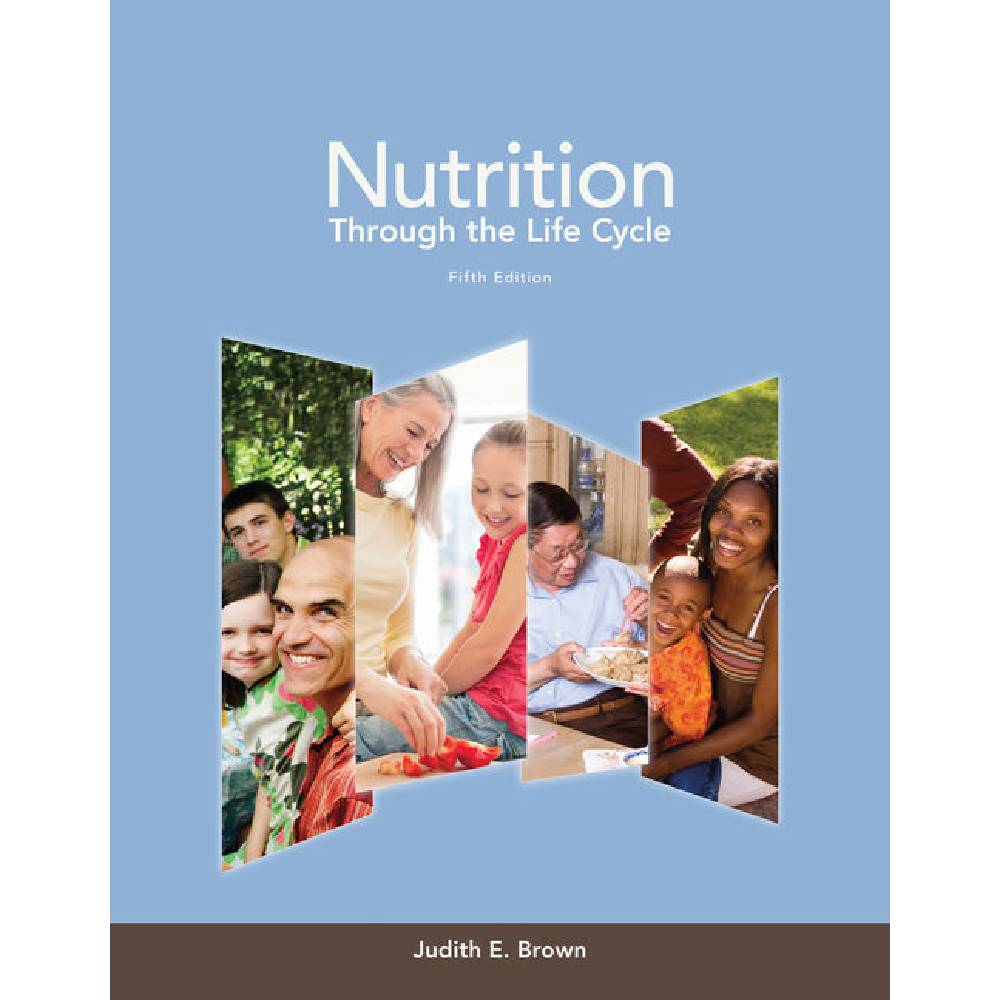Nutrition Through The Life Cycle 5th Edition By Judith E. Brown – Test Bank
Multiple Choice
1. It is estimated that up to _____ of children with disabilities have some type of nutritional problem.
a. 25%
b. 45%
c. 55%
d. 75%
e. 90%
ANS: e DIF: Fact-based REF: 303 OBJ: 11.1
2. Eligibility for early intervention services for a child with special health needs is based on all the following EXCEPT:
a. presence of developmental delays in cognitive, physical, language and speech, psychosocial, or self- helping skills.
b. presence of a physical or mental condition with a high probability of delay.
c. they are born preterm by at least 8 weeks.
d. they are at risk medically or environmentally for substantial developmental delay if services are not provided.
e. they have Down syndrome.
ANS: c DIF: Fact-based REF: 304-305 OBJ: 11.1
3. Children that qualify for early intervention services include all of the following EXCEPT _____.
a. a two-year-old toddler with Down syndrome
b. a baby born with spina bifida
c. a four-year-old preschooler with autism
d. a preterm baby who is now three years old with bronchopulmonary dysplasia
ANS: c DIF: Application-based, medium REF: 304 OBJ: 11.1
4. Which of the following conditions results in increased calorie needs?
a. Bronchopulmonary dysplasia
b. Down syndrome
c. Prader-Willi syndrome
d. Spina bifida
ANS: a DIF: Fact-based, easy REF: 306 OBJ: 11.2
5. Overweight and obesity are common in Down syndrome children because they have lower caloric needs due to:
a. low muscle mass.
b. lower mobility.
c. short stature.
d. All of the above
e. a and c only
ANS: d DIF: Fact-based REF: 305 OBJ: 11.2
6. A child who has Down syndrome would have a poorer health outcome associated with
a. skipping one meal.
b. offering meals in the school foodservice cafeteria on days when he is not attending.
c. reviewing his individualized education plan three weeks late.
d. mismatching his energy needs with food intake, thus leading to excessive weight gain.
ANS: d DIF: Application-based, medium REF: 305 OBJ: 11.2
7. Cystic fibrosis is a condition in which _____.
a. chromosome 7 is genetically changed, causing pulmonary complications
b. cysts develop on the spinal cord and limit voluntary movement
c. there is difficulty with voluntary or involuntary muscle control
d. three copies of chromosome 21 occur
e. the lungs are underdeveloped
ANS: a DIF: Fact-based, easy REF: 306 OBJ: 11.2
8. The typical diet prescribed for children who are underweight with a chronic condition may be modified by _____.
a. increasing fat calories
b. changing texture
c. increasing portions
d. customizing to the individual child
e. All of the above
ANS: e DIF: Application-based, medium REF: 306 OBJ: 11.2
9. A disorder where head growth is reduced starting in the toddler years is called _____.
a. Prader-Willi syndrome
b. Rett syndrome
c. cerebral palsy
d. autism
e. Down syndrome
ANS: b DIF: Fact-based, easy REF: 307 OBJ: 11.3
10. Rett syndrome is a rare disorder characterized by:
a. damage that occurs to underdeveloped lungs resulting in breathing that requires extra effort.
b. a genetic change on the X chromosome resulting in severe neurological delays.
c. damage to the part of the brain controlling movement of the legs, interfering with muscle control and ambulation.
d. damage to chromosome 7 that interferes with all the exocrine functions in the body.
e. destruction of the infection-fighting abilities of the body by a virus.
ANS: b DIF: Fact-based REF: 307 OBJ: 11.3













Reviews
There are no reviews yet.